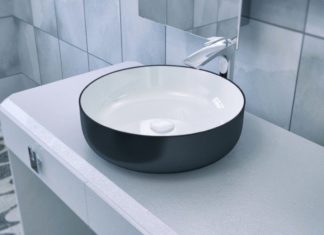Draining the mystery around sinks
Not much thought is given to the sink. When we think about the preparation of meals, many us associate the labor with the kitchen. And yet it’s the sink that really does the brunt of the work, isn’t it? What would a kitchen be without it? Non-functional, probably…
Sinks will last a long time, often upwards of fifteen years, but they eventually become too worn. First the finish dulls, then it starts to chip, and leaks appear around the drain’s rim. If you’re remodeling your kitchen, you’ll want to replace the entire assembly, sink and faucet. They are available from a wide host of manufacturers in a large variety of materials and styles. You can get porcelain-on-cast-iron, stainless steel, or other newer materials. Sinks are typically the cheapest part of a kitchen, despite there being “high-end” models in the $1000+ range. But you can expect a quality sink to start at around $200.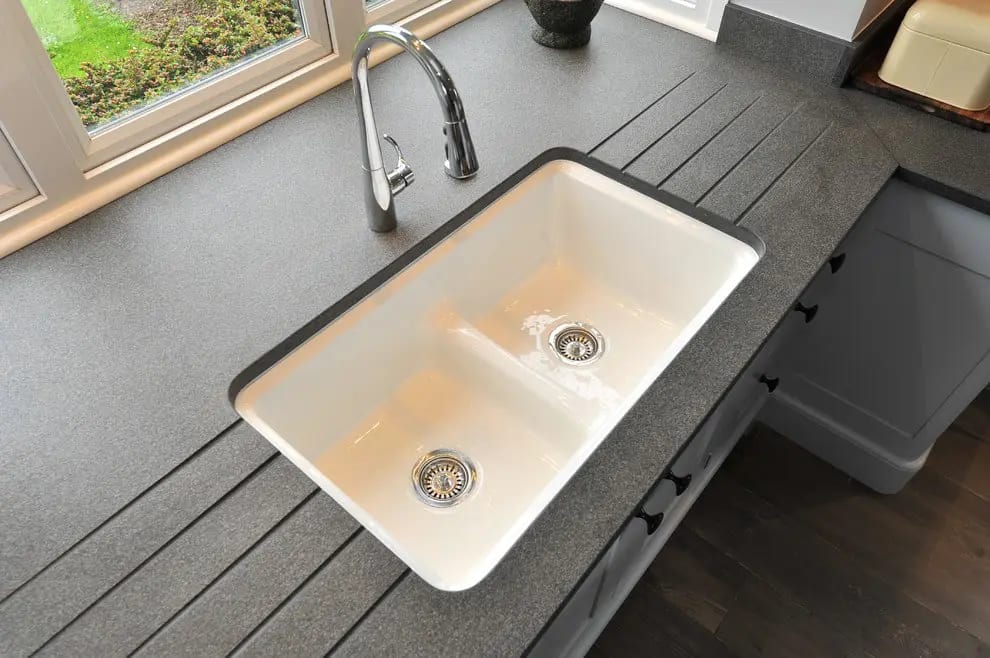
There is an overwhelming array of options. Single and multi-bowls, various depths and designs… you’ll first need to get the size right. Obviously you want to match the diameter of the space, but consider that a large multi basin will just dominate a smaller kitchen. If you have a kitchen that is less than 150 square feet, a standard 22”x24” single bowl is recommended (per the National Kitchen & Bath Association). Naturally larger kitchens can 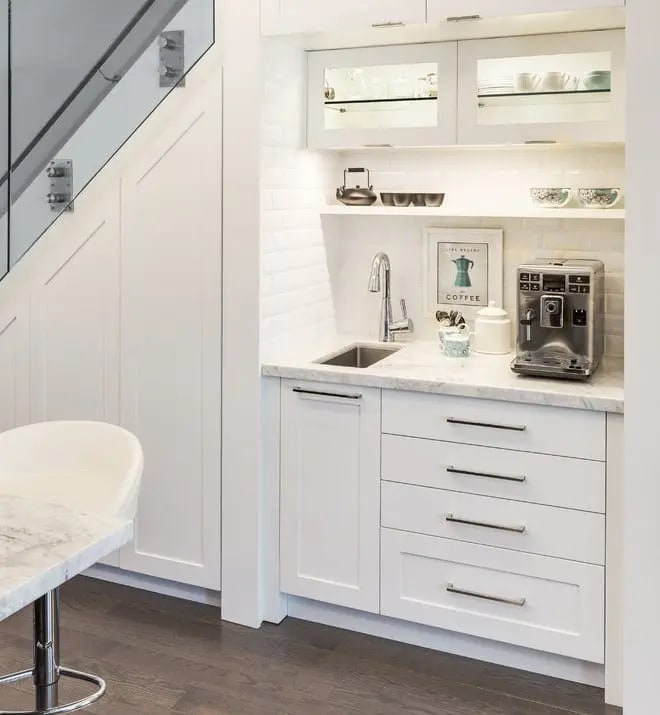 accommodate more options. You can have the convenience of double or triple bowls that make multitasking easy and possible. Starting at around $200, you’ll pay a bit more for multi-bowls that feature contrasting depth sinks.
accommodate more options. You can have the convenience of double or triple bowls that make multitasking easy and possible. Starting at around $200, you’ll pay a bit more for multi-bowls that feature contrasting depth sinks.
Kitchen designers often recommend one large main sink plus a smaller one (a “bar sink”) for large kitchens. Unless there are two cooks in the home who often work simultaneously a second sink is not recommended. The plumbing upgrade to accommodate such a setup will cost around $400 in itself.
After you’ve determined the ideal size and bowl arrangement, you need to pick the type of mounting to use. This is a practical decision that also has an effect on aesthetics. Also, you’ll need to specify the number of holes in the sink deck. Depending on how many accessories (spray hoses, soap dispensers) you have – along with the faucet – the number can vary typically between one and five.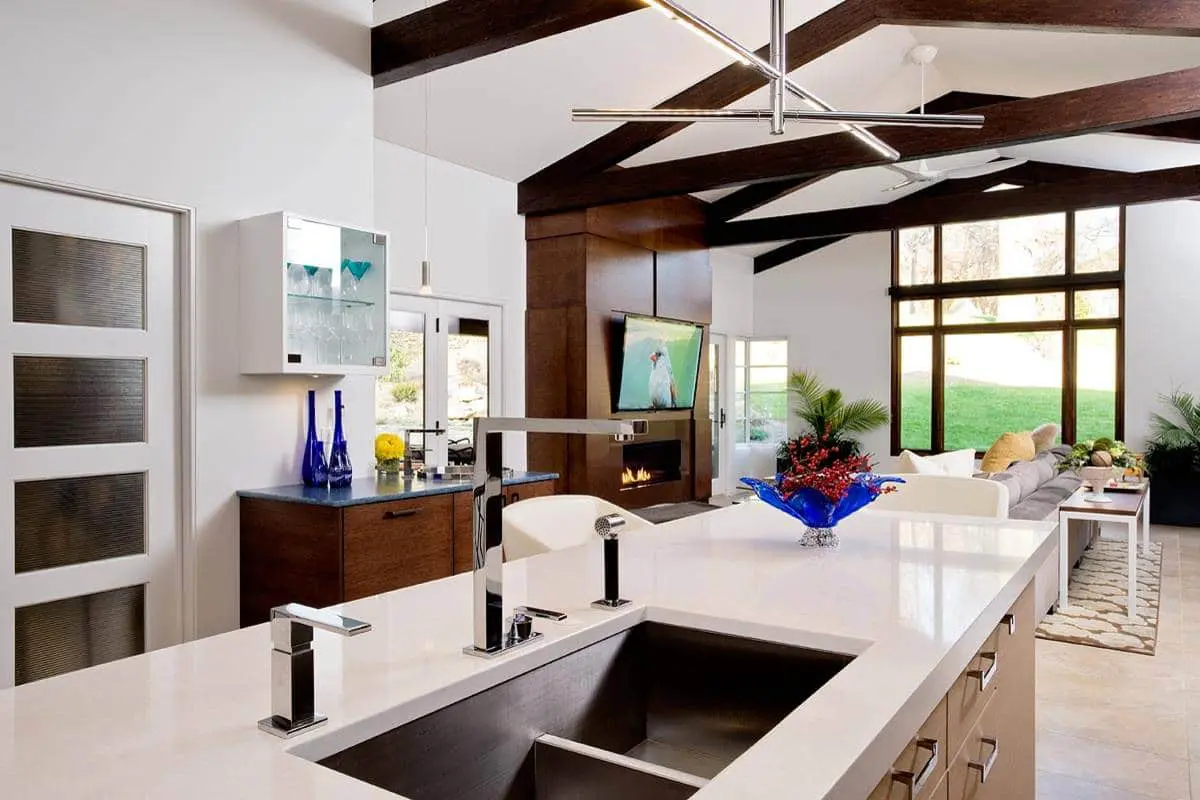
What color do you want your sink to be? It’s nice to have an accent that compliments the color theme of the kitchen. Almost unfairly, you will actually pay between 15 to 40 percent more for anything other than white. You also have to pay a separate cost for the drain strainer. A quality stainless steel one runs only $10 to $15. Be sure to match the strainer to the sink, the various styles aren’t all necessarily compatible. Make your choices carefully; you’ll be living with them for a long time. A really good sink can last as long as you want it – with the proper care, of course.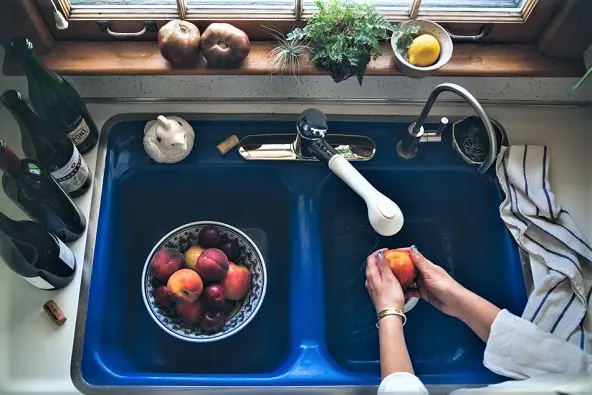
And, what of faucets – are they all the same? Do yourself a favor and stick with a reputable brand. You may spend more than $125 but you can be assured of the quality and lead-free water delivery. There are quite a few styles, finishes and features to choose here as well.
Currently among the most popular faucets are single handed models with pull out spouts. They’re available in different finishes and are perfect for cleaning produce as well as the sink. Stainless steel spout hoses aren’t likely to kink up, but will run you about $325. Pay a little extra if you want a water filter installed in the faucet. As far as finishes, chrome has long been a favorite. It’s easy to clean and quite durable. Polished brass and satin nickel finishes resist abrasive cleaners and are becoming popular options themselves. After you’ve signed off on the style and finish, check that your faucet features washerless operation, which could be based on ball, cartridge or ceramic disk valves. It’s nice to have a spout that rotates 180 degrees as well.
Lastly, you need to figure out how and where the sink is to be attached to the countertop. Do this before ordering your new basin. An easy option is a self-rimming sink, taking only an hour to install. Clips and screws will keep lighter varieties in place while the sheer weight of the larger self-rimming sinks will do the work of providing stability.
Another option that is just as popular is that of the under-mount sink. They’re sleek and solid and facilitate easy counter to sink wiping. You may even combine different shapes and sizes of bowls. They are designed to work with solid materials like granite, as the counter material is exposed. They do take twice as long as the self-rimming sink, but that’s really a non-issue when you consider the life of the product.




